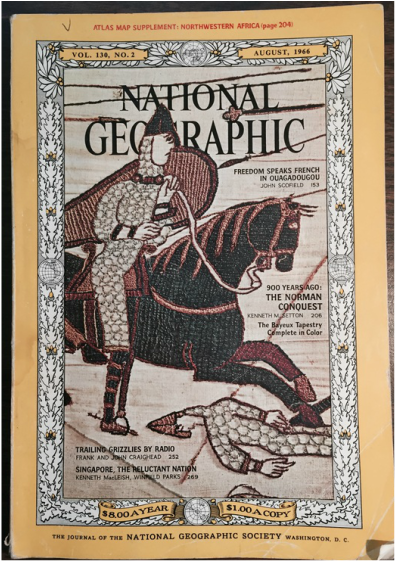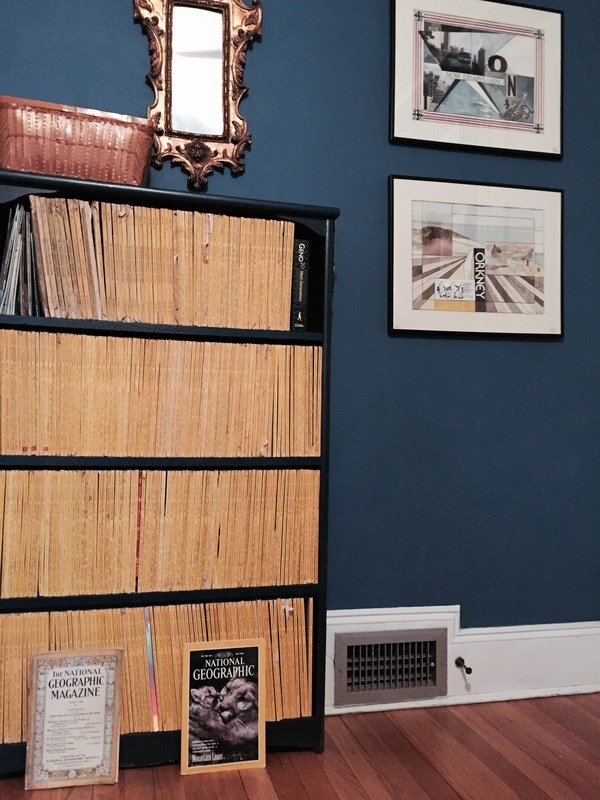|
Generally, I ascribe to the Dumpster Theory of Life. When we pass, our kids will toss all that stuff into a gigantic bin. But just as a gesture to downsizing, we were making pretensions of cleaning out the attic – something, anything.
How about those National Geographics? They’ve been up in the attic for five years, maybe 10. The Web says nobody wants Geographics, not for money, not for free. Try an old-age home, the Comments say. Wait, this is an old-age home, technically. I went to the attic and put them in doubled-up shopping bags, flecking off the dust and grit. A few on the top were damp from a long-patched drip near the chimney. Ninety-nine per cent were in fine shape. I could hear the voices of the writers and the editors and, yes, the subjects – the Uighurs of China, the Zulus of Africa, the clog-dancers of Appalachia, the explorers of outer space: “Look at us. We were important then. We are important now. Get us out of the attic, to somebody who appreciates us." I lugged the magazines, 20 or so to a bag, down to the second floor. (The movable wooden stairway with its sturdy steel housing is itself a relic, from the great builder, Walter Uhl, in the mid-30’s, when homes were made to last.) I began my exploration of ancient history, chronologically: A few dozen older issues we had collected from a library sale on the North Fork of Long Island.
By 1963, we were subscribing, leaving the Geographics around, to make our children, present and future, curious about the world out there. In August 1966, shortly after my wife and I made our first Europe on $5 a Day trip to Europe, there arrived an issue with “900 Years Ago: The Norman Conquest. The Bayeux Tapestry, Complete in Color.” We saved it, of course, and in April of 1975 we took all three children to France for a month, riding the Métro and glorying in the baguettes (trés crustillant) and driving out to Normandy in a wheezing old Citroen a friend had lent me. The August, 1966, Geographic came with us and we consulted the 46 pages that explained every figure of the Bayeux Tapestry as we walked alongside it. Now the same edition of the Geographic was in my hand, bringing back memories. We could not part with these heirlooms. I painted a cabinet dark blue and soon filled it with Geographics -- May 1928 in the upper left corner, all the way to 1992, lower right. Then we put the last 15 years in a hall shelf. (We cut the subscription when our grandchildren began thumbing through smartphones instead of pages.) The National Geographic endures, bless its earnest heart. Our “collection” – approximately 600 editions – is home. I am poking through the Bayeux Tapestry, thinking of Galette Bretonne and the coast at Omaha Beach. The Dumpster can wait.
Brian Savin
3/28/2016 08:37:59 pm
Ah, what memories this invokes. I remember as a child getting my first subscription as a gift from my Uncle James. In those days one needed to be "nominated" by a member to be a subscriber. That subscription set me on a course of stamp collecting and frequent visits to the American Museum of Natural History with eventual volunteer professional involvement in what was called "The Men's Committee." I never went to the Explorer's Club, but would have loved an opportunity to see some explorers depicted in those pages. I still pick that magazine up whenever I spot it in a doctor's office and am rapidly catching up! 3/30/2016 12:29:35 pm
George--it looks more like a relocation rather than a down-sozing.
bruce
4/4/2016 10:40:41 pm
George, Comments are closed.
|
Categories
All
|











